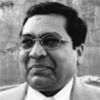End tussle over collegium, it's unseemly
The three limbs of the Constitution are interdependent and each one has to work within the given framework that has stood the test of time.

The country continues to be subjected to an unseemly tug-of-war between the executive and judiciary, and relations between the two constitutional pillars are at a new low, with no sign that their differences will be resolved in a hurry. This is a sorry state, on top of the unsightly act of a Chief Justice of India shedding tears in public in the Prime Minister’s presence to drive home his point over delays in judicial appointments. This was followed by the Chief Justice’s comments on the Prime Minister’s Independence Day speech from Red Fort with words that were totally out of place. Never before in Independent India’s history, right from the day the Supreme Court was inaugurated on January 28, 1950, have we reached such a nadir. At the heart of the dispute are differences between the executive and judiciary on the government’s memorandum of procedure that sets out the working of the collegium of judges (the Chief Justice of India and four seniormost Supreme Court justices) that decides on appointments and elevations/transfers of judges of the Supreme Court and high courts. These courts now have a total 434 vacancies, appointments to which are held up pending an agreement over how the collegium should work.
The tussle over the so-called MoP of the collegium, the prolonged nature of the dispute and the stalling of appointments in the interim have all the marks of a high-stakes power battle in which no side wants to climb down. Into this dispute comes a new turn with reports that one of the justices of the collegium, Justice Jasti Chelameswar, kept away from the latest meeting and sent a letter instead demanding accountability, transparency in the working of the collegium and insisting that it record the reasons for its decisions. These are uncomfortable questions for the judiciary but they are reasonable questions, and have been asked before by voices outside the chambers. Now coming from within the judiciary itself, they lend a new sense of urgency and demand revisiting of the manner of functioning of the collegium, which after all is one of the highest and most powerful bodies making appointments at the seniormost rungs of our judiciary. Right now, it’s a fact that the collegium functions like a closed-door brotherhood and no one may know why a particular candidate was chosen and why another was rejected. There is no set procedure, there are no rules and what is discussed behind closed doors is forever unavailable to the public, now or even years later, as there are no records of what was said, of any dissent that might be aired or indeed the nature of the discussion itself.
The judge raising the issues now has pointed to these very concerns, arguing (as widely reported) that it could lead to all kinds of arbitrariness in the collegium’s decisions. Not heeding concerns like these raises fears that the judiciary has started asserting itself as a player larger than the state, taking a particularly assertive stand when the government of the day, with a thumping majority in Parliament, is pushing back. If there are those who worry about how the executive may interfere with the working of the judiciary, there are equal concerns on judicial overreach in our system of parliamentary democracy. The three limbs of the Constitution are interdependent and each one has to work within the given framework that has stood the test of time. A free and independent judiciary is a sine qua non for India to thrive as a democracy and as a nation known for the rule of the law. But at the same time, this cannot be translated to mean such a skew in the fine constitutional balance that the judiciary becomes larger than an elected Parliament and encroaches on its powers to enact legislation.
In this context, it is instructive to study this interesting passage of a speech delivered by Jawaharlal Nehru, while inaugurating the Supreme Court on January 28, 1950, in the Court House at King Edward Road, New Delhi. This was in the presence of the five judges of the Supreme Court. He said, as quoted in the book, Supreme Court in Quest of Identity by Gobind Das: “No Supreme Court and no judiciary can stand in judgment over the sovereign will of Parliament representing the will of the entire community. If we go wrong here and there it can point it out, but in the ultimate analysis, where the future of the community is concerned, no judiciary can come in the way. And if it comes in the way, ultimately the whole Constitution is a creature of Parliament... But it is obvious that no court, no system of judiciary can function in the nature of a Third House, as a kind of Third House of correction. So it is important that with this limitation the judiciary should function.” The memorandum of procedure, therefore, requires to be considered by taking into account the minority opinion to be reconciled with the majority view and the will of the sovereign — that is, Parliament. This reconciliation at the earliest is in the best of the interests of the judiciary, the executive and Parliament, and of the Republic itself.

